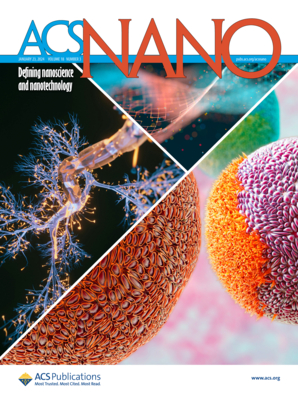Piezoelectric and Photoconductive Zinc Oxide–Wood Hybrids Obtained by Atomic Layer Deposition
IF 15.8
1区 材料科学
Q1 CHEMISTRY, MULTIDISCIPLINARY
引用次数: 0
Abstract
The development of sustainable functional wood-based materials for advanced photonic, optical, and energy-harvesting applications is a topic of great priority and scientific interest. Owing to its inherent piezoactivity and photoconductivity, zinc oxide (ZnO) can be of help for all these applications. While previously used for wood-based piezoelectric nanogenerators, its use for enabling wood with photoconductive properties has not yet been demonstrated. Here, we introduce an innovative method to produce ZnO–wood hybrids based on atomic layer deposition (ALD), a technique so far underrepresented in the field of wood functionalization. By a studied combination of ALD, customized sample geometry, structure-retaining delignification, and careful selection of the drying method, we obtained a homogeneous functionalization of a bulk wood scaffold with layers of nanocrystalline ZnO. This approach allowed us to achieve control over the homogeneity, distribution, and coating thickness of the oxide layer. The micro- and nanostructure of the resulting hybrids were investigated by electron microscopy as well as by X-ray diffraction and scattering. The ZnO–wood hybrids show an anisotropic piezoelectric response due to the natural structure of the wood. Moreover, we demonstrate the use of ZnO-functionalized wood for the fabrication of bulk (photo)conductive wood. Upon irradiation with UV light, a significant decrease in resistivity is observed, which increases again upon removal of UV light. Finally, we used the hybrids to fabricate a ZnO-wood replica by thermal removal of the cellulose scaffold. This treatment leaves behind a detailed inorganic wood replica down to the smallest open accessible features such as micrometer-sized wood pits.

求助全文
约1分钟内获得全文
求助全文
来源期刊

ACS Nano
工程技术-材料科学:综合
CiteScore
26.00
自引率
4.10%
发文量
1627
审稿时长
1.7 months
期刊介绍:
ACS Nano, published monthly, serves as an international forum for comprehensive articles on nanoscience and nanotechnology research at the intersections of chemistry, biology, materials science, physics, and engineering. The journal fosters communication among scientists in these communities, facilitating collaboration, new research opportunities, and advancements through discoveries. ACS Nano covers synthesis, assembly, characterization, theory, and simulation of nanostructures, nanobiotechnology, nanofabrication, methods and tools for nanoscience and nanotechnology, and self- and directed-assembly. Alongside original research articles, it offers thorough reviews, perspectives on cutting-edge research, and discussions envisioning the future of nanoscience and nanotechnology.
 求助内容:
求助内容: 应助结果提醒方式:
应助结果提醒方式:


